
Uses primary
- Subject:
- History
- Material Type:
- Lesson
- Provider:
- Connecticut Humanities
- Provider Set:
- Teach It
- Date Added:
- 02/09/2023

Uses primary
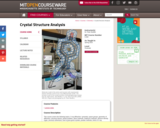
This course covers the following topics: X-ray diffraction: symmetry, space groups, geometry of diffraction, structure factors, phase problem, direct methods, Patterson methods, electron density maps, structure refinement, how to grow good crystals, powder methods, limits of X-ray diffraction methods, and structure data bases.
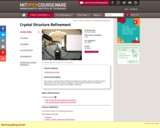
This course in crystal structure refinement examines the practical aspects of crystal structure determination from data collection strategies to data reduction and basic and advanced refinement problems of organic and inorganic molecules.
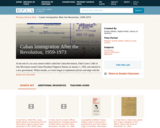
At the end of a six-year armed conflict called the Cuban Revolution, Fidel Castro’s 26th of July Movement ousted Cuban President Fulgencio Batista on January 1, 1959, and ushered in a new government. Within months, as Castro began to implement policies and align with the communist Soviet Union, hundreds of thousands fled Cuba for the United States. Most were educated members of the upper and middle classes. Many of these immigrants, termed “exiles” and “refugees,” believed their stay in the United States was temporary because Castro’s government would be short-lived. As Castro’s regime persisted, they realized their flight could be permanent. Pushed out by the consequences of the Revolution, the influx of refugees swelled the Cuban population of the United States from 79,000 in 1960 to 439,000 by 1970. Cubans settled across the country, with the most significant community in Miami, Florida, followed by Union City, New Jersey.

Most historians agree that the world has never come closer to nuclear war than it did during a thirteen-day period in October 1962, after the revelation that the Soviet Union had stationed several medium-range ballistic missiles in Cuba. This lesson will examine how this crisis developed, how the Kennedy administration chose to respond, and how the situation was ultimately resolved.
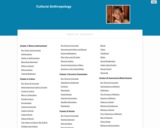
An introductory cultural anthropology textbook covering all major topics and produced by Lumen Learning.
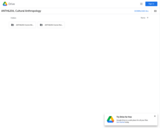
Students examine the anthropological perspective of human culture, including such institutions as kinship, politics, and religion, and evaluate the interrelationship between culture, environment and biology. Students explore the effects of globalization on culture while developing critical thinking skills through the application of essential anthropological approaches, theories, and methods.Login: guest_oclPassword: ocl
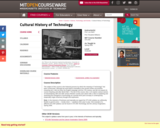
The subject of this course is the historical process by which the meaning of "technology" has been constructed. Although the word itself is traceable to the ancient Greek root teckhne (meaning art), it did not enter the English language until the 17th century, and did not acquire its current meaning until after World War I. The aim of the course, then, is to explore various sectors of industrializing 19th and 20th century Western society and culture with a view to explaining and assessing the emergence of technology as a pivotal word (and concept) in contemporary (especially Anglo-American) thought and expression.

This course examines cultural performances of Asia, including both traditional and contemporary forms, in a variety of genres. Students will explore the communicative power of performances with attention to the ways performers, media, cultural settings, and audiences interact. The representation of cultural difference is considered and how it is altered through processes of globalization. Performances are viewed live when possible, but the course also relies on video, audio, and online materials as necessary.

Culturally Responsive Curriculum Scorecards
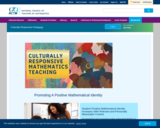
Promoting A Positive Mathematical Identity

Culture, Embodiment, and the Senses will provide an historical and cross-cultural analysis of the politics of sensory experience. The subject will address western philosophical debates about mind, brain, emotion, and the body and the historical value placed upon sight, reason, and rationality, versus smell, taste, and touch as acceptable modes of knowing and knowledge production. We will assess cultural traditions that challenge scientific interpretations of experience arising from western philosophical and physiological models. The class will examine how sensory experience lies beyond the realm of individual physiological or psychological responses and occurs within a culturally elaborated field of social relations. Finally, we will debate how discourse about the senses is a product of particular modes of knowledge production that are themselves contested fields of power relations.
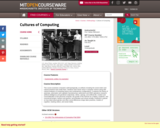
This course examines computers anthropologically, as artifacts revealing the social orders and cultural practices that create them. Students read classic texts in computer science along with cultural analyses of computing history and contemporary configurations. It explores the history of automata, automation and capitalist manufacturing; cybernetics and WWII operations research; artificial intelligence and gendered subjectivity; robots, cyborgs, and artificial life; creation and commoditization of the personal computer; the growth of the Internet as a military, academic, and commercial project; hackers and gamers; technobodies and virtual sociality. Emphasis is placed on how ideas about gender and other social differences shape labor practices, models of cognition, hacking culture, and social media.
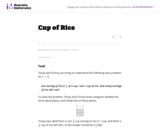
One common mistake students make when dividing fractions using visuals is the confusion between remainder and the fractional part of a mixed number answer.

Social media gives us a chance to choose how we present ourselves to the world. We can snap and share a pic in the moment or carefully stage photos and select only the ones we think are best. When students reflect on these choices, they can better understand the self they are presenting and the self they aim to be.
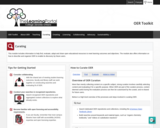
This module includes information to help find, evaluate, adapt and share open educational resources to meet learning outcomes and objectives. The module also offers information on how to describe and organize OER to enable its discovery by future users.
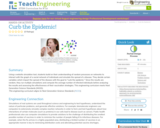
Using a website simulation tool, students build on their understanding of random processes on networks to interact with the graph of a social network of individuals and simulate the spread of a disease. They decide which two individuals on the network are the best to vaccinate in an attempt to minimize the number of people infected and "curb the epidemic." Since the results are random, they run multiple simulations and compute the average number of infected individuals before analyzing the results and assessing the effectiveness of their vaccination strategies.
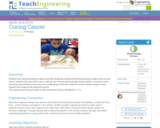
Students learn about biomedical engineering while designing, building and testing prototype surgical tools to treat cancer. Students also learn that if cancer cells are not removed quickly enough during testing, a cancerous tumor may grow exponentially and become more challenging to eliminate. Students practice iterative design as they improve their surgical tools during the activity.
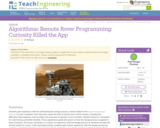
Students gain experience with the software/system design process, closely related to the engineering design process, to solve a problem. First, they learn about the Mars Curiosity rover and its mission, including the difficulties that engineers must consider and overcome to operate a rover remotely. Students observe a simulation of a robot being controlled remotely. These experiences guide discussion on how the design process is applied in these scenarios. The lesson culminates in a hands-on experience with the design process as students simulate the remote control of a rover. In the associated activity, students gain further experience with the design process by creating an Android application using App Inventor to control one aspect of a remotely controlled vehicle. (Note: The lesson requires a LEGO® MINDSTORMS® Education NXT base set.)
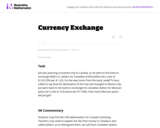
This task requires students to computer currency exchanges.